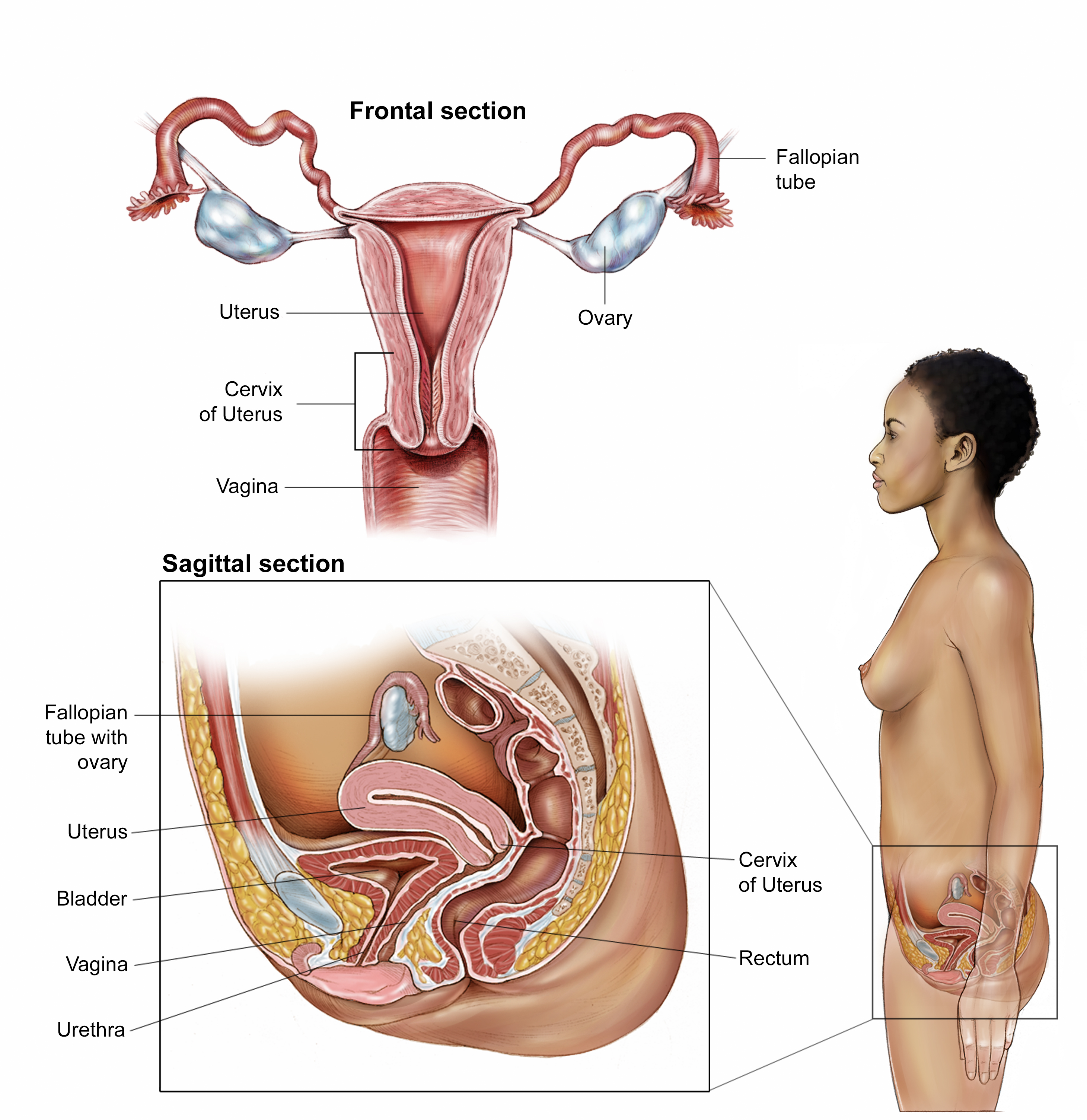ON THIS PAGE: You will find some basic information about cervical cancer and the parts of the body it may affect. This is the first page of Cancer.Net’s Guide to Cervical Cancer. Use the menu to see other pages. Think of that menu as a roadmap for this entire guide.
About the cervix
The cervix is the lower, narrow part of the uterus in the female reproductive system. The uterus holds a growing fetus during pregnancy. The cervix connects the lower part of the uterus to the vagina and, with the vagina, forms the birth canal.
About abnormal cells in the cervix that can become cancer
Cervical cancer begins when healthy cells on the surface of the cervix change or become infected with human papillomavirus (HPV) and grow out of control, forming a mass called a tumor. Long-term infection of HPV on the cervix can result in cancer, leading to a mass or tumor on the cervix. A tumor can be cancerous or benign. A cancerous tumor is malignant, meaning it can spread to other parts of the body. A benign tumor means the tumor will not spread.
At first, the changes in a cell are abnormal, not cancerous, and are sometimes called "atypical cells." Researchers believe that some of these abnormal changes are the first step in a series of slow changes that can lead to cancer. Some of the atypical cells go away without treatment, but others can become cancerous. This phase of precancerous disease is called "cervical dysplasia", which is an abnormal growth of cells. Sometimes, the dysplasia tissue needs to be removed to stop cancer from developing. Often, the dysplasia tissue can be removed or destroyed without harming healthy tissue. However, sometimes a hysterectomy is needed to prevent cervical cancer. A hysterectomy is the surgical removal of the uterus and cervix. A loop electrosurgical excision procedure (LEEP) may also be recommended. LEEP uses an electrical current passed through a thin wire hook to remove the tissue.
Treatment of a precancerous area depends on the following factors:
-
The size of the lesion and the type of changes that have occurred in the cells
-
The patient's desire to have children in the future
-
The patient's age and general health
-
Preferences of the patient and the doctor
If the precancerous cells change into cancer cells and spread deeper into the cervix or to other tissues and organs, the disease is then called cervical cancer or invasive cervical cancer.
About cervical cancer
Cervical cancer can grow from the surface of the cervix seen in the vagina, called the ectocervix, or from the canal going from the vagina to the uterus, called the endocervix. There are 2 main types of cervical cancer named for the type of cell where the cancer started. Other types of cervical cancer are rare.
-
Squamous cell carcinoma makes up about 80% to 90% of all cervical cancers. These cancers start in the cells on the outer surface covering of the cervix.
-
Adenocarcinoma makes up 10% to 20% of all cervical cancers. These cancers start in the glandular cells that line the lower birth canal in the internal portion of the cervix.
The squamous and glandular cells meet at the opening of the cervix at the squamocolumnar junction, which is the location where most cervical cancers start.
Looking for More of an Introduction?
If you would like more of an introduction, explore these related items. Please note that these links will take you to other sections on Cancer.Net:
-
ASCO Answers Fact Sheet: Read a 1-page fact sheet that offers an introduction to cervical cancer. This free fact sheet is available as a PDF, so it is easy to print.
-
Cancer.Net Blog: Read an American Society of Clinical Oncology (ASCO) expert’s opinion about what newly diagnosed patients should know about gynecologic cancer.
-
Cancer.Net En Español: Read about cervical cancer in Spanish. Infórmase sobre cancer de cuello uterino en español.
-
Find a Cancer Doctor. Search for a cancer specialist in your local area using this free database of doctors from the American Society of Clinical Oncology (ASCO).
-
Cancer Terms. Learn what medical phrases and terms used in cancer care and treatment mean.
The next section in this guide is Statistics. It helps explain the number of people who are diagnosed with cervical cancer and general survival rates. Use the menu to choose a different section to read in this guide.

